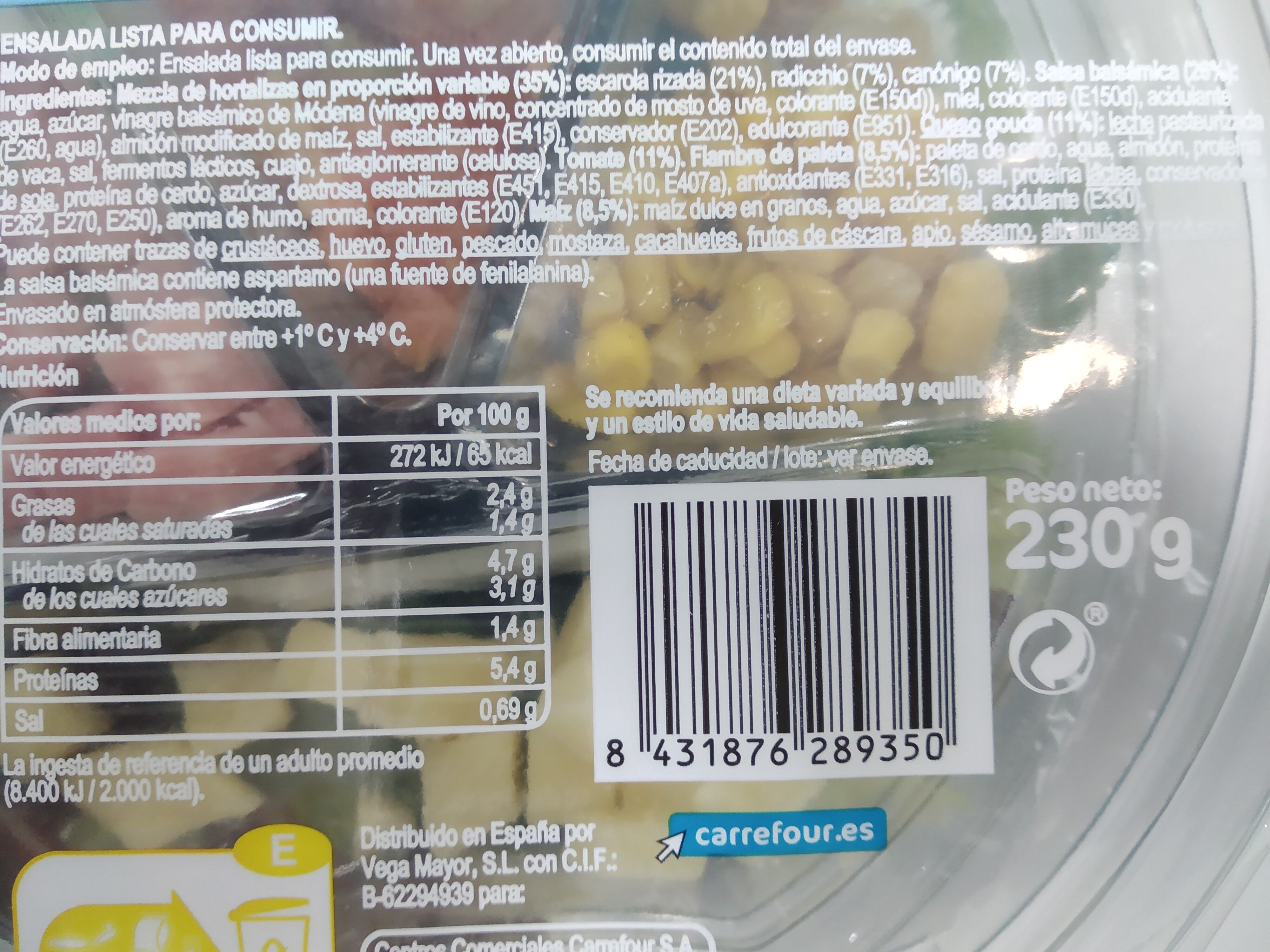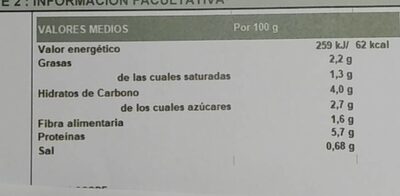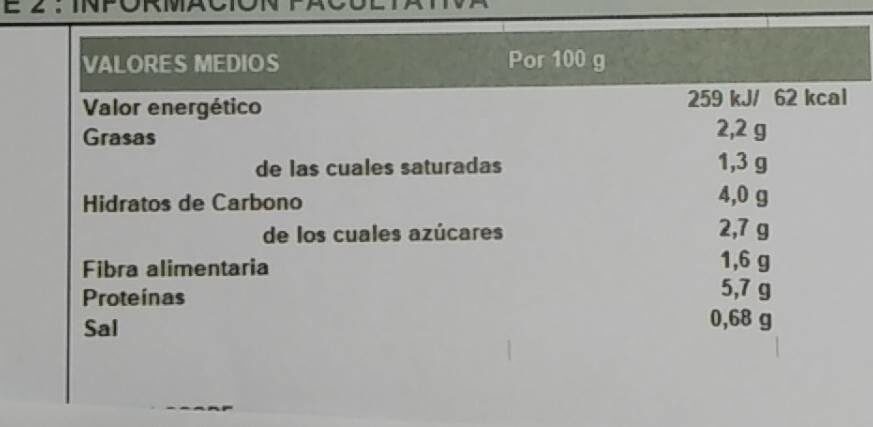Ensalada light - Carrefour - 230 g
This product page is not complete. You can help to complete it by editing it and adding more data from the photos we have, or by taking more photos using the app for Android or iPhone/iPad. Thank you!
×
Some of the data for this product has been provided directly by the manufacturer Carrefour España.
Barra-kodea: 8431876289350 (EAN / EAN-13)
Kopurua: 230 g
Markak: Carrefour, Bon appetit
Kategoriak: en:salads
Etiketak, ziurtagiriak, sariak:
en:Organic, en:Green Dot, Nutriscore, Nutriscore A
Dendak: Carrefour
Saltzen diren herrialdeak: Espainia
Matching with your preferences
Ingurumena
Ontziratzea
Transportation
Report a problem
Datuen iturria
Product added on by kiliweb
Last edit of product page on by segundo.
Produktuaren orria -gatik editatua fabi2, openfoodfacts-contributors, org-carrefour-espana, rmcramiro, roboto-app, teolemon, yuka.V5puHvzVBewER_bz04QtjAKLBvaxBOJVHlEDog, yuka.sY2b0xO6T85zoF3NwEKvlhZtf_j8_CjkEkfTuE-N34e0Ho75MNZv7o7VPas, yuka.sY2b0xO6T85zoF3NwEKvlkAeffPMuWjPaQHVmRzQ7NyTPLW3ROtczNHdLqg, yuka.sY2b0xO6T85zoF3NwEKvlklda97X_TH6DTXun0eh6fusCpnnccNi5dX9Las, yuka.sY2b0xO6T85zoF3NwEKvlmtLQcqDhSzabQz6hW-1zNCcM5HrUP5ov7emb6s.










